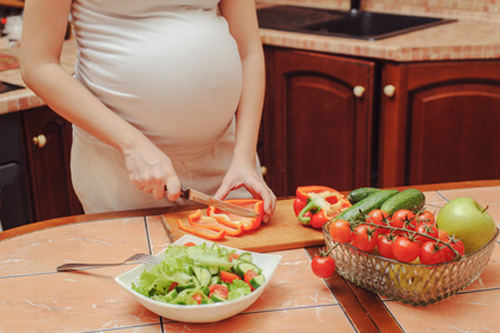Idiosyncratic cravings for foods such as ice cream or pickles, occur in most pregnant women. Over-nutrition and obesity resulting from such cravings can cause metabolic and psychiatric disorders in both mother and child. The neural underpinnings of such cravings have remained unclear partly because of the lack of suitable behavioral study models.
According to preliminary findings in a new mouse model, published in Nature Metabolism on April 4, 2022, (“Food craving-like episodes during pregnancy are mediated by accumbal dopaminergic circuits“) these food cravings are driven by dopamine signaling in the brain’s reward pathway. The neural insights on pregnancy-related food cravings also indicate that such eating behaviors may have long lasting metabolic consequences in the offspring into adulthood.
Lead author of the paper, Roberta Haddad-Tóvolli, PhD, a postdoctoral researcher in the laboratory of senior investigator Marc Claret, PhD, at IDIBAPS in Barcelona, said, “The general interest of the laboratory is to understand neuronal mechanisms regulating food intake. Cravings for palatable foods are highly prevalent during pregnancy. We became interested in the mechanisms underlying this distinct ingestive pattern, because despite the popular knowledge around cravings, its neurobiology remains unknown.”

The mesolimbic pathway, that connects a region in the midbrain called the ventral tegmental area to the basal ganglia in the forebrain, is regulated by dopamine signaling and regulates reward-induced behaviors such as motivated appetite.
The team shows, pregnant and pseudo-pregnant (females mated with vasectomized males) mice experience episodes of food craving that are associated with the reorganization of brain connectivity that affects key components of the dopaminergic mesolimbic circuitry.
The researchers show pregnancy modulates dopamine signaling through neurons expressing dopamine D2 receptors in the nucleus accumbens, a region in the basal forebrain that directly modulates food craving episodes.
Their experiments also show mouse pups, particularly male pups, of female mice that were allowed to indulge their food cravings during pregnancy showed increased body weight, glucose intolerance, and were more likely to develop anxiety-like behaviors and eating disorders during adulthood, compared to pups of mice that were not allowed to indulge their food cravings during pregnancy.
“We have unraveled that the maternal brain suffers a dynamic functional connectivity change that directly impacts the activity of the dopaminergic mesolimbic system, towards cravings for high-palatable food items. These food craving episodes, when recurrent, directly affected the metabolic and neuropsychological health of the offspring. Mice born from frequent food craving mothers were heavier and presented impaired glucose homeostasis, in addition to a higher vulnerability to develop anxiety and cognition deficits, as well as an increased predisposition to compulsive eating disorders,” said Haddad-Tóvolli.

The investigators conducted longitudinal functional magnetic resonance imaging (fMRI) to study the brain’s resting state network activity in pregnant female mice, and conducted a battery of behavioral tests in the offspring of both sexes.
“Our results reveal the cognitively motivated nature of pregnancy food cravings and advocates for moderating emotional eating during gestation to prevent deterioration of the offspring’s neuropsychological and metabolic health,” the authors note.
In a commentary on the study in Nature Metabolism, Serge Luquet, PhD, and Giuseppe Gangarossa, PhD, neuroscientists at the University of Paris, who were not involved in the study, said, “This work substantiates the vulnerability of the dopamine signaling pathway during pregnancy and brings to the forefront a cautionary note regarding the potential culprits of over-feeding during this period.”
Haddad-Tóvolli, Luquet and Gangarossa further note that the findings of the current study will require confirmation through rodent-to-human translational studies to pinpoint genetic, hormonal, nutritional and environmental factors that generate this window of vulnerability during pregnancy.



